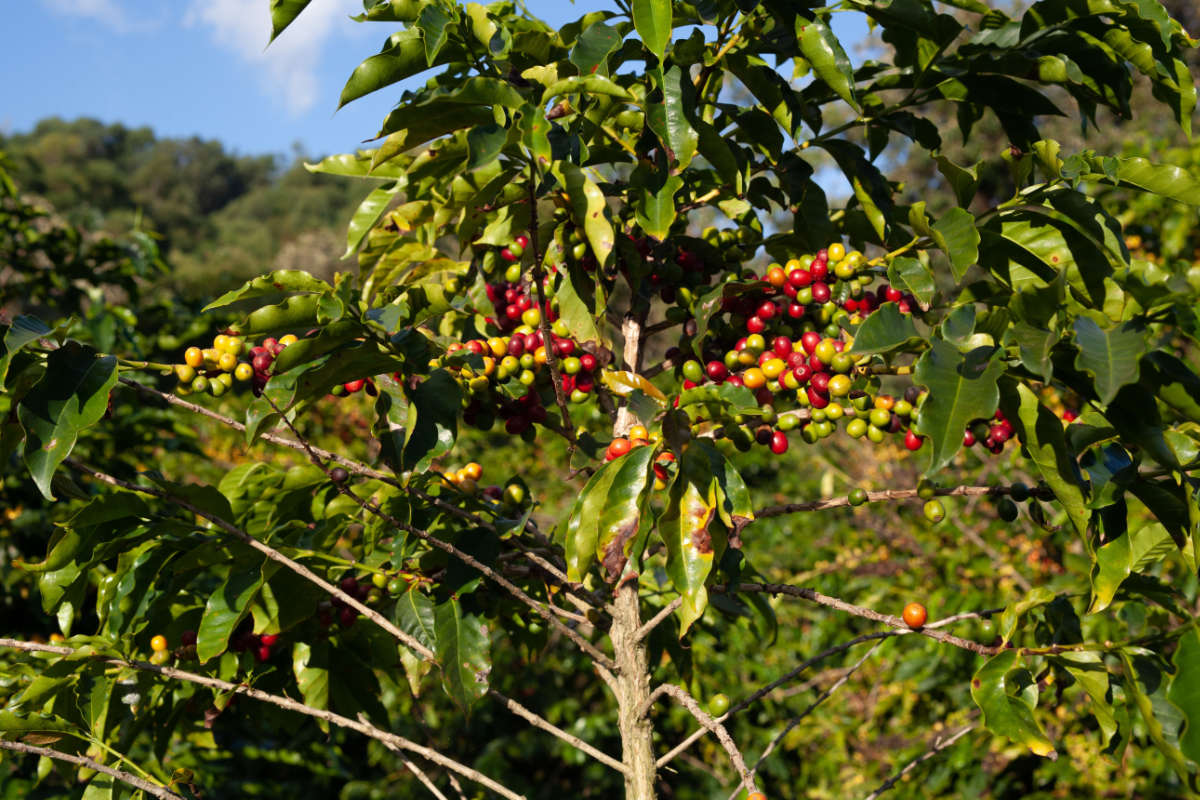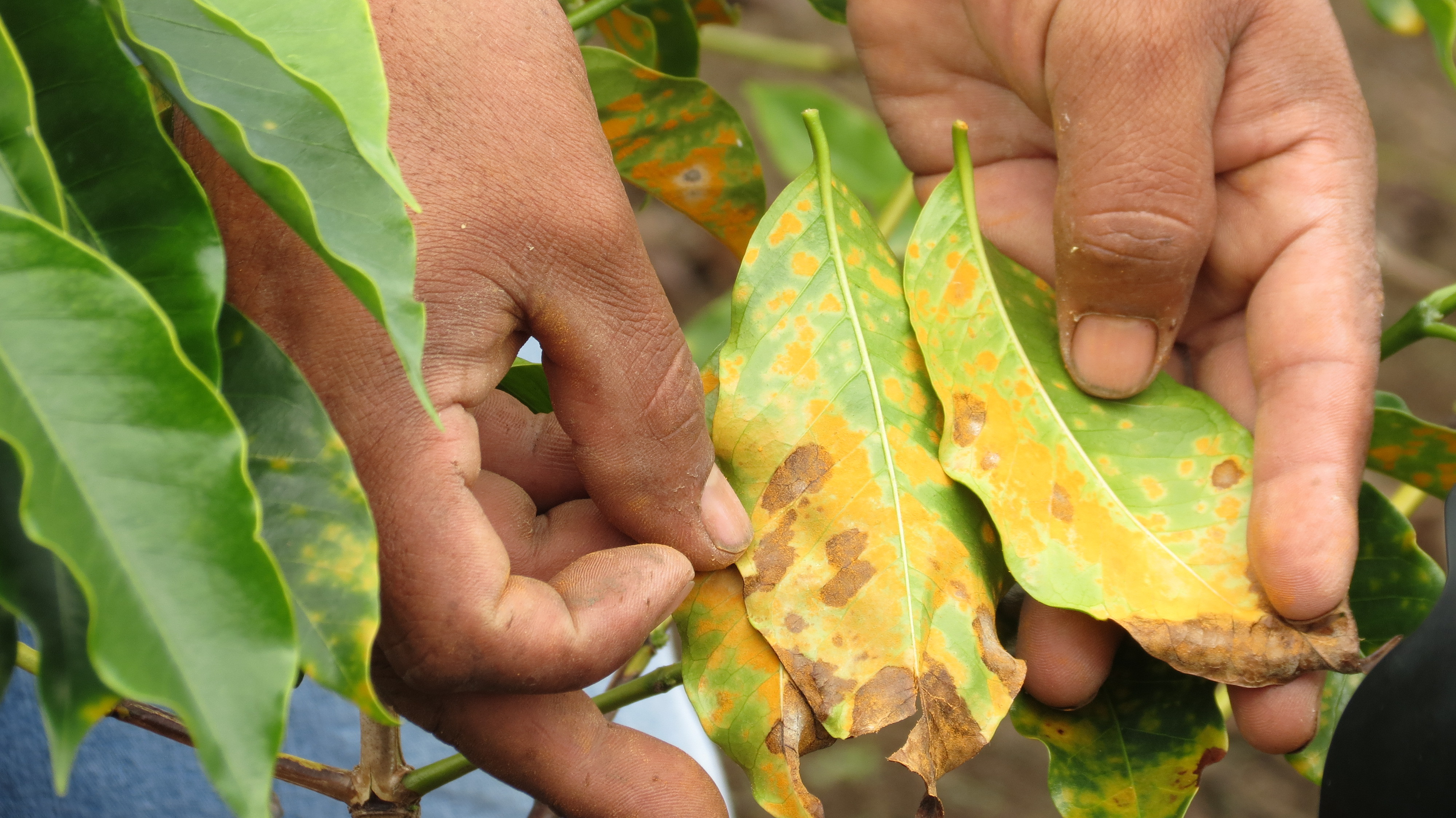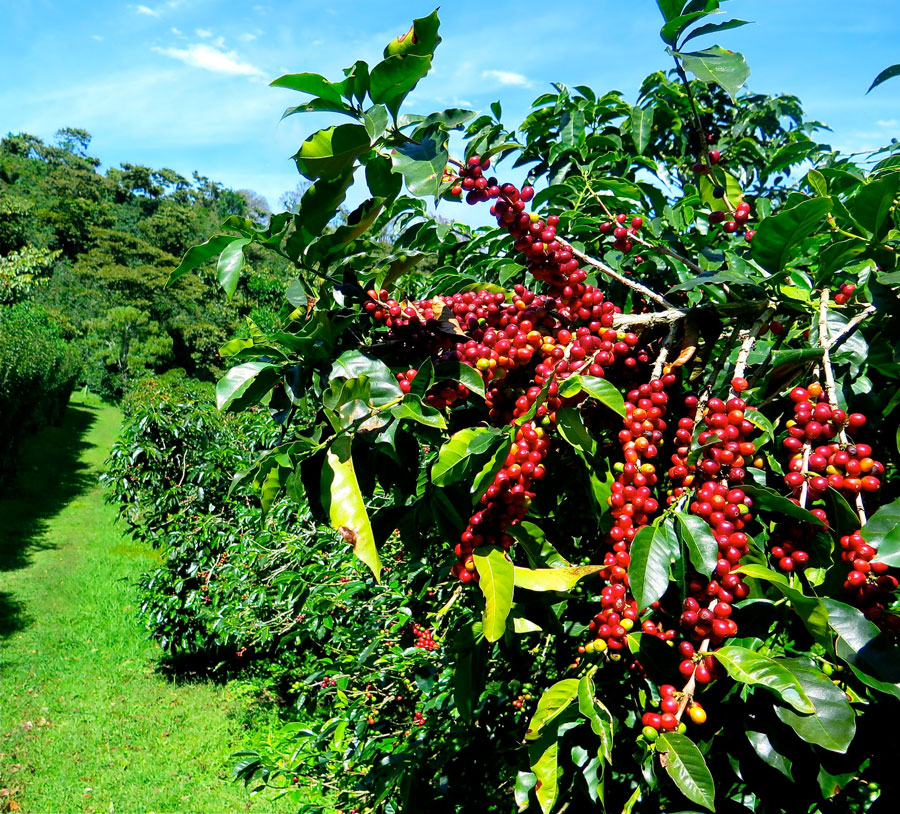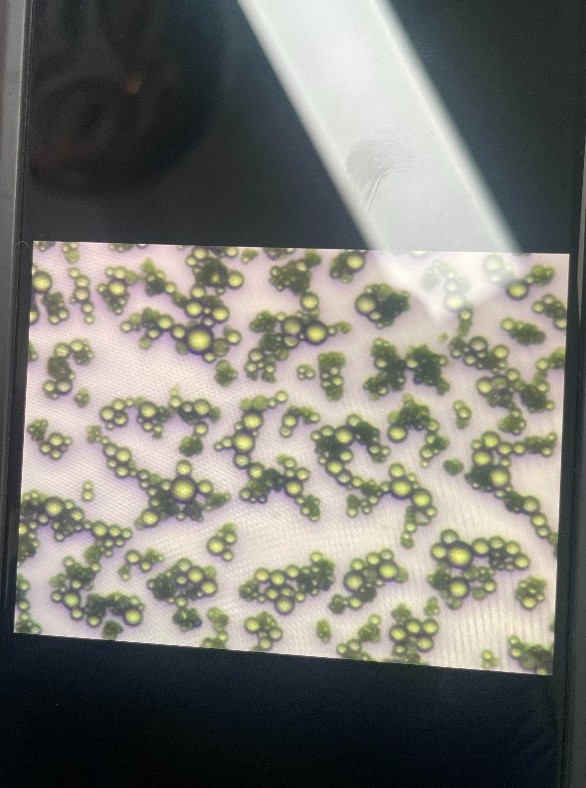
Yellow leaf disease
Coffee leaf yellowing is one of the most common problems and causes serious damage to coffee growers. This disease not only reduces productivity but also affects the quality of coffee beans. Coffee leaf yellowing is often caused by many different factors, from biological agents such as fungi and bacteria, to environmental factors and improper care. To better understand coffee leaf yellowing, we will learn about the causes, symptoms, effects and prevention measures.

1. Causes of coffee leaf yellowing
Coffee leaf yellowing can be caused by many different factors, including both biological agents and environmental factors. Here are the main causes:
1.1. Fungi
Some fungi such as Fusarium spp., Rhizoctonia solani, Phytophthora spp., and Cercospora coffeicola can cause coffee leaf yellowing. These fungi often attack the roots of plants, damaging the water-conducting and nutrient-conducting tissues, thereby causing yellow leaves and wilting.
1.2. Root-knot nematodes
Nematodes, especially root-knot nematodes (Meloidogyne spp.), are also one of the causes of yellow leaves on coffee plants. Nematodes attack the roots, causing damage to the roots, leading to reduced water and nutrient absorption, causing yellow leaves and poor plant growth.
1.3. Nutrient deficiencies
Coffee plants that are deficient in essential nutrients such as nitrogen (N), potassium (K), magnesium (Mg), and iron (Fe) can also have yellow leaves. Insufficient supply of these nutrients makes the plant unable to grow normally, leading to symptoms of yellow leaves and weak plants.
1.4. Waterlogging or Poorly Drained Soil
Waterlogging or poorly drained soil causes the coffee plant roots to lack oxygen, causing root rot, which leads to yellow leaves. Excessively wet soil conditions also create a favorable environment for fungi and bacteria to grow, causing other diseases to the plant.
1.5. Mealybugs and pests
Insects such as mealybugs (Planococcus spp.) attack coffee plants by sucking sap from the leaves and stems, causing the plant to weaken, the leaves to lose their green color and turn yellow. Pests can also cause yellow leaves when attacking coffee plants.
2. Symptoms of yellow leaves on coffee plants
Symptoms of yellow leaves on coffee plants can manifest in many different ways, depending on the cause of the disease. Here are the most common signs:
2.1. Yellow leaves and leaf loss
One of the most recognizable symptoms is the phenomenon of yellow leaves. Initially, only a few leaves at the base or lower part of the canopy turn yellow, then the disease spreads to the leaves at the top of the tree. The leaves turn yellow and fall off gradually over time, especially in dry or rainy conditions.
2.2. Wilting
When coffee trees are infected with yellow leaf disease caused by fungi or nematodes, the roots will be damaged, resulting in the tree no longer being able to absorb water and nutrients. This causes the coffee tree to gradually wilt, the leaves turn yellow, the branches become weak, and it may die if not treated promptly.
2.3. Slow growth
Coffee trees infected with yellow leaf disease often show symptoms of slow growth, stunted trees, few branches, and no flowers or very few flowers. When the tree is weakened, the number of fruits also decreases, directly affecting the yield.
2.4. Root rot
For yellow leaf disease caused by fungi or nematodes, the root system of the tree will be severely damaged. The roots rot, turn brown-black and can be easily broken when inspected. Damaged roots cause the tree to lose its ability to absorb water and nutrients, leading to symptoms of yellow leaves and tree death.
3. Harmful effects of yellow leaf disease on coffee trees

Yellow leaf disease causes serious damage to coffee trees, reducing productivity and directly affecting the quality of coffee beans. Some of the main harmful effects of yellow leaf disease include:
• Reduced productivity: Coffee trees with yellow leaves will not be able to grow normally, leading to reduced ability to flower and set fruit. Coffee bean production is significantly reduced, causing economic losses to growers.
• Weakened and dead trees: When yellow leaf disease is not controlled in time, coffee trees will gradually weaken and may eventually die completely, especially those infected with fungi or root-damaging nematodes.
• Spread to the whole garden: Yellow leaf disease, especially fungal and bacterial diseases, can spread rapidly in the garden if not treated properly. This increases the risk of widespread crop failure.
4. Conditions for disease occurrence
Coffee leaf yellowing disease often occurs in the following conditions:
• Wet weather: The rainy season or areas with high humidity are ideal conditions for fungi and bacteria to grow, causing yellow leaf disease.
• Poorly drained soil: Waterlogged coffee growing areas or poor drainage systems make the roots susceptible to rot, creating conditions for yellow leaf disease to occur.
• Lack of nutrition: Coffee trees grown in poor soil, lacking nutrients, especially nitrogen, potassium and iron, are often at high risk of yellow leaf disease.
5. Measures to prevent yellow leaf disease on coffee trees

To control and prevent yellow leaf disease on coffee trees, growers need to apply comprehensive measures including proper tree care ways, use fertilizers properly and manage pests and diseases.
5.1. Improve soil and water management
• Improve drainage system: Ensure the coffee garden has a good drainage system, avoid prolonged flooding. It is possible to raise the planting beds or make drainage ditches so that water does not stagnate around the base of the tree.
• Water properly: Water regularly and properly, do not let the soil get too dry or too wet. During the dry season, it is necessary to water enough to ensure that the tree does not lack water leading to yellow leaves.
5.2. Balanced fertilization
• Full fertilization: Apply adequate and balanced fertilization with essential nutrients such as nitrogen (N), potassium (K), magnesium (Mg) and iron (Fe) for healthy plant growth, increasing disease resistance.
• Use organic fertilizer: Applying decomposed organic fertilizer or microbial fertilizer helps improve soil quality, enhance beneficial microorganisms and help plants absorb nutrients better.
5.3. Pest control
• Use fungicides: When detecting yellow leaf disease caused by fungi, fungicides such as Mancozeb, Metalaxyl or Copper oxychloride can be used to control the spread of the fungus. for disease prevention and treatment such as: Tatsu 25WP, NAPOLEON, Metalaxyl.
• Control nematodes: Use nematode control measures such as using nematicides, or apply biological measures such as applying microbial fertilizers containing nematode antagonistic bacteria.
• Control mealybugs and pests: Use pesticides or biological measures to control mealybugs and other harmful pests.
5.4. Biological measures
• Use biological products: Biological products containing beneficial microorganisms such as Trichoderma can help inhibit the growth of fungi and nematodes that cause disease, helping coffee plants grow healthier.
5.5. Garden sanitation
• Garden sanitation: After each crop season, it is necessary to clean the coffee garden thoroughly and destroy diseased plant residues to prevent the spread of disease.
6. Conclusion
Coffee leaf yellowing is one of the diseases that causes great damage to growers, affecting productivity and product quality. However, if proper preventive measures are applied and the tree is cared for properly, leaf yellowing can be effectively controlled and prevented.
Coffee growers need to pay attention to providing adequate nutrition, improving soil and water conditions, as well as controlling pathogens such as fungi, bacteria and nematodes. This will help protect coffee gardens from leaf yellowing, ensuring high and stable yields throughout the seasons.
Bình luận
Những bình luận mới nhất



